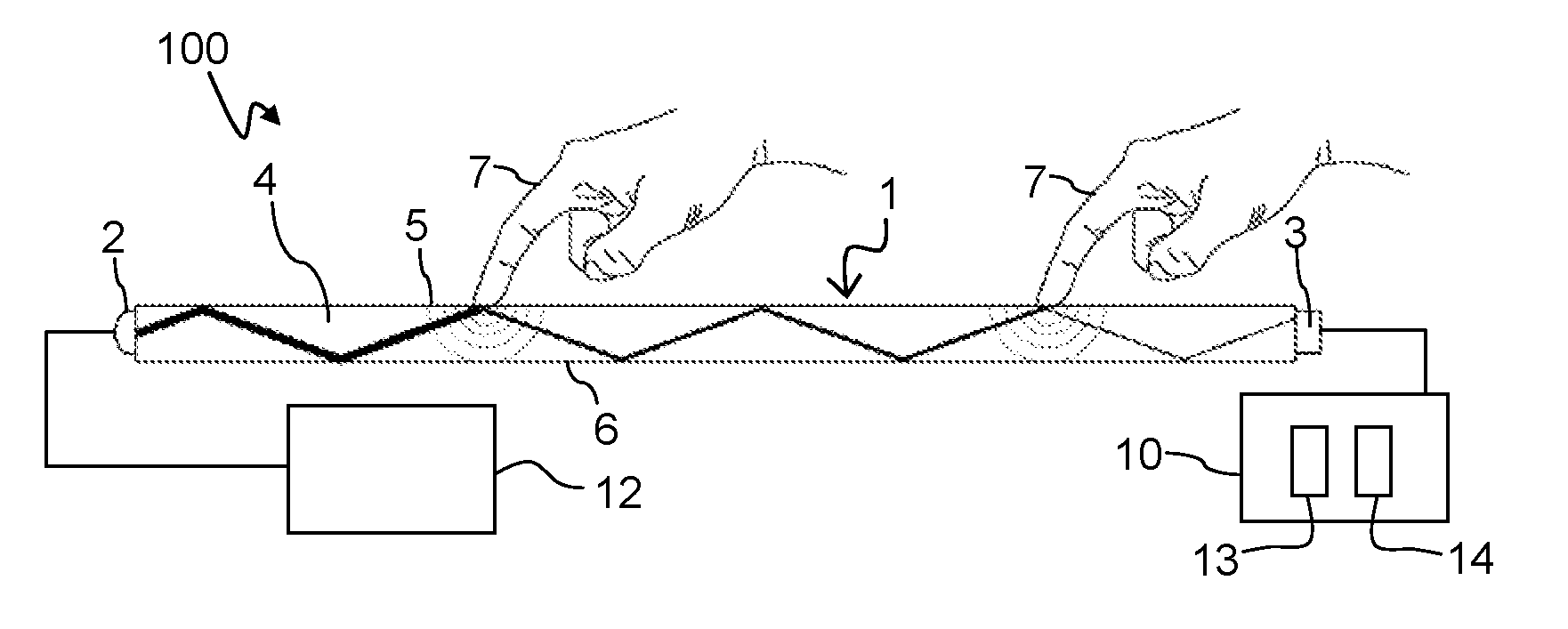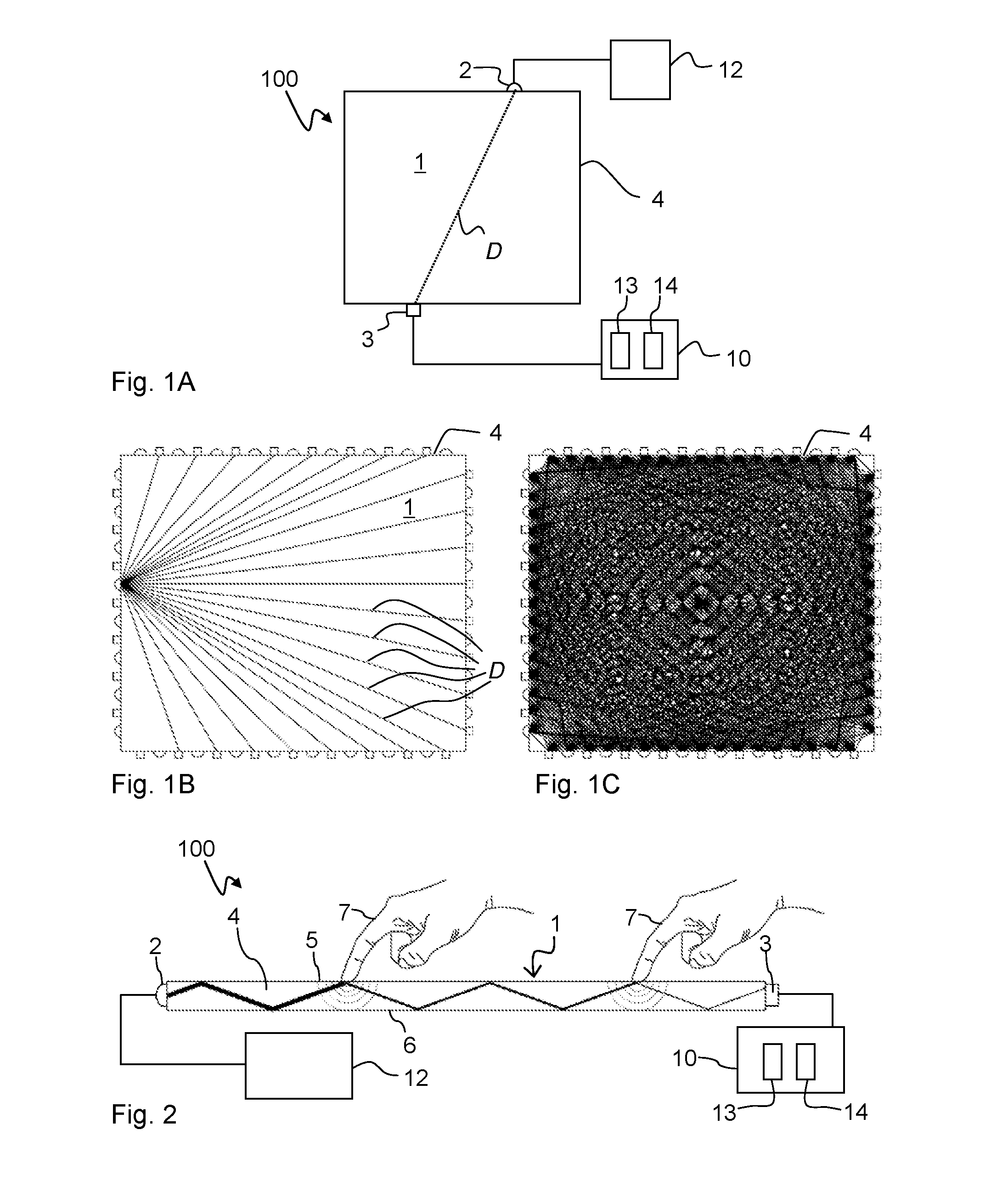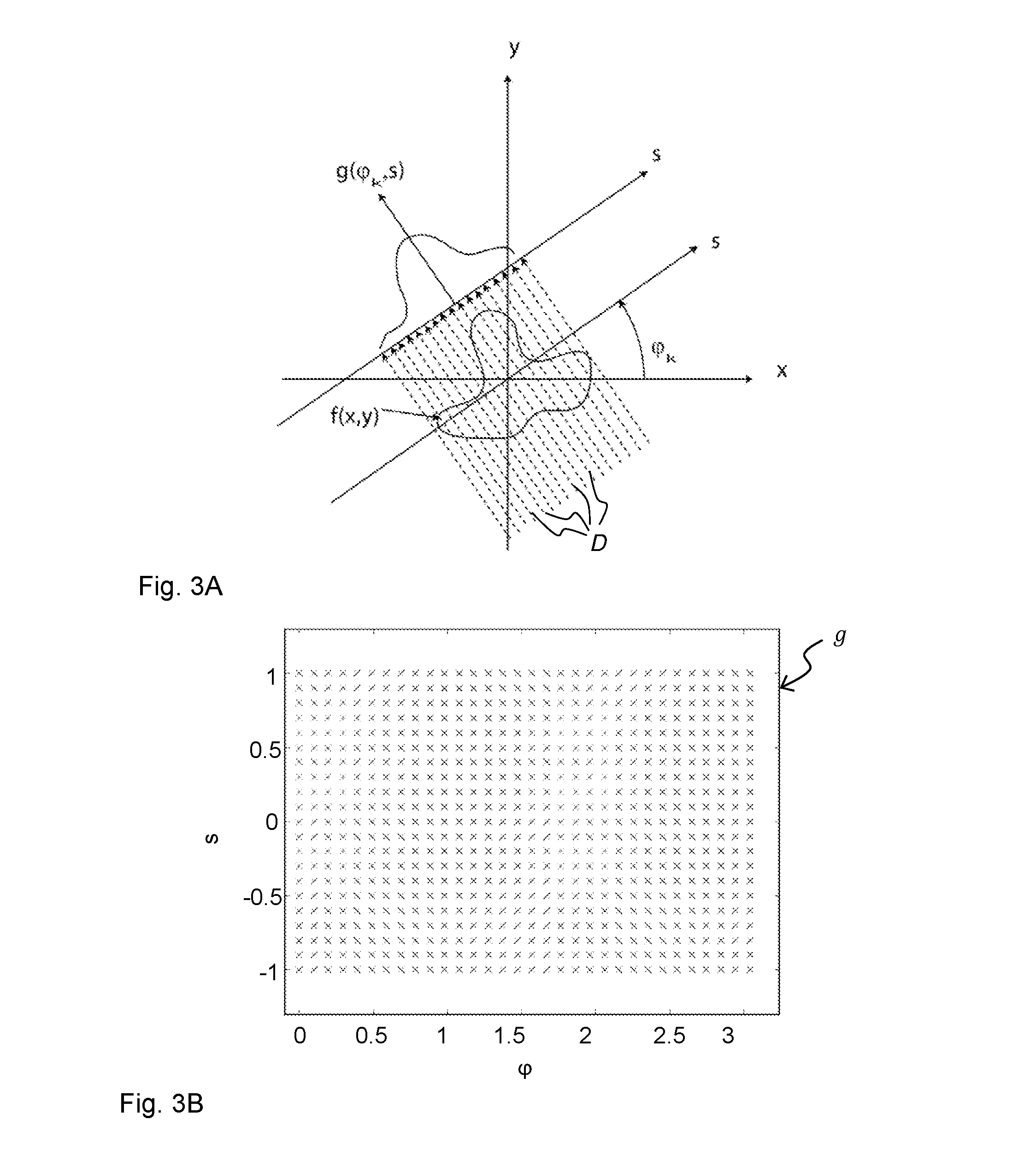Tomographic Processing For Touch Detection
a technology of touch detection and tomographic processing, applied in the field of touch sensing systems and data processing techniques, can solve the problems of limited time available for generating interaction patterns, affecting the spatial resolution, and affecting the accuracy of touch detection, so as to improve spatial resolution
- Summary
- Abstract
- Description
- Claims
- Application Information
AI Technical Summary
Benefits of technology
Problems solved by technology
Method used
Image
Examples
Embodiment Construction
[0048]The present invention is directed to techniques that may improve the accuracy of tomographic reconstruction as applied for detecting touches based on projection measurements in a touch-sensitive apparatus. Throughout the description, the same reference numerals are used to identify corresponding elements.
[0049]A touch-sensitive apparatus that uses projection measurements is operated to transmit energy of some form across a touch surface in such a way that an object that is brought into close vicinity of, or in contact with, the touch surface does not block the transmission of energy but rather causes a local decrease in the transmitted energy. The apparatus repeatedly performs projection measurements, in which the transmitted energy on a large number of propagation paths across the touch surface is measured, and a subsequent image reconstruction, in which observed values acquired in the projection measurements are processed by tomographic reconstruction to generate a two-dimen...
PUM
 Login to View More
Login to View More Abstract
Description
Claims
Application Information
 Login to View More
Login to View More - R&D
- Intellectual Property
- Life Sciences
- Materials
- Tech Scout
- Unparalleled Data Quality
- Higher Quality Content
- 60% Fewer Hallucinations
Browse by: Latest US Patents, China's latest patents, Technical Efficacy Thesaurus, Application Domain, Technology Topic, Popular Technical Reports.
© 2025 PatSnap. All rights reserved.Legal|Privacy policy|Modern Slavery Act Transparency Statement|Sitemap|About US| Contact US: help@patsnap.com



